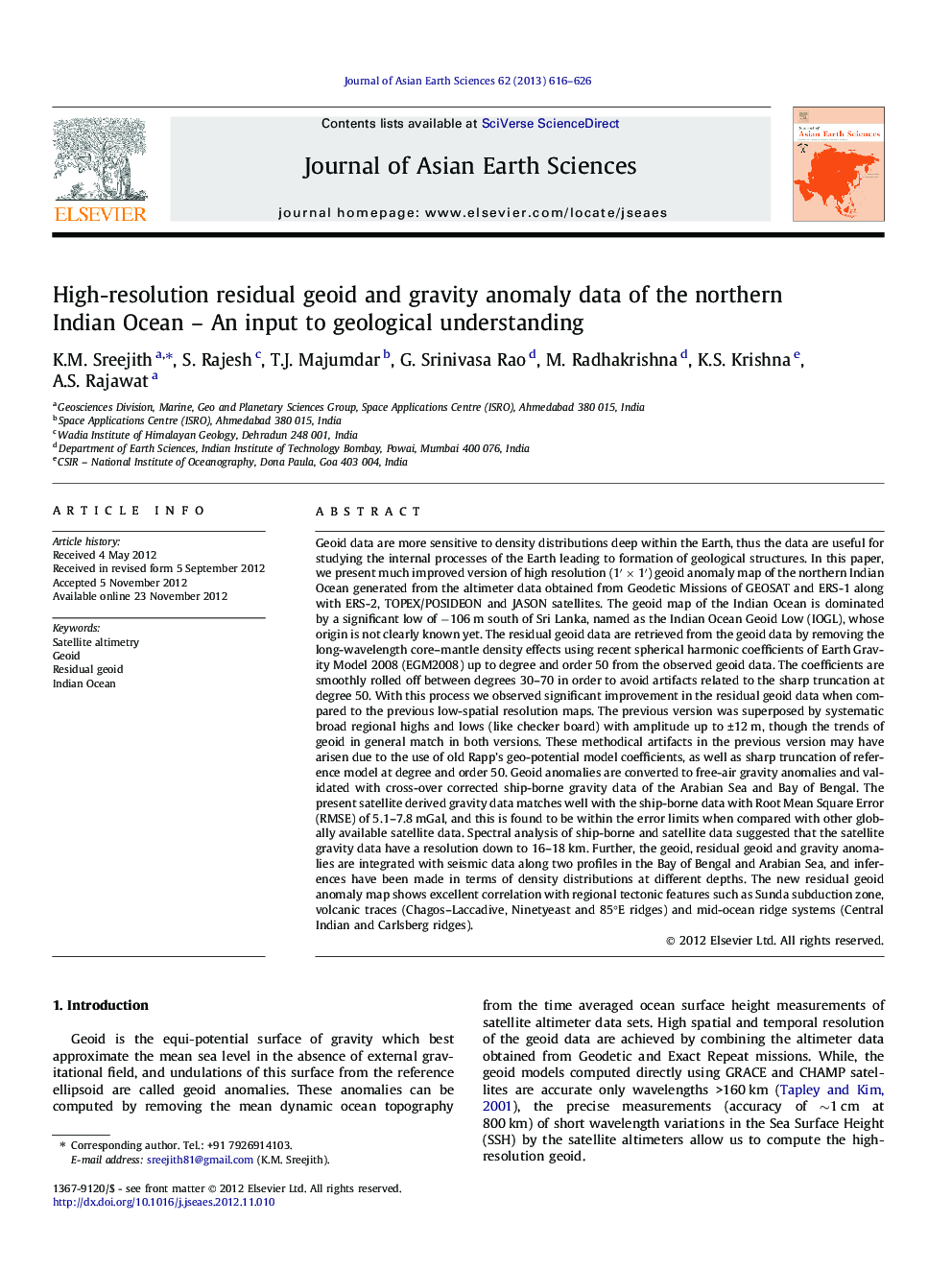| کد مقاله | کد نشریه | سال انتشار | مقاله انگلیسی | نسخه تمام متن |
|---|---|---|---|---|
| 4731302 | 1640403 | 2013 | 11 صفحه PDF | دانلود رایگان |
Geoid data are more sensitive to density distributions deep within the Earth, thus the data are useful for studying the internal processes of the Earth leading to formation of geological structures. In this paper, we present much improved version of high resolution (1′ × 1′) geoid anomaly map of the northern Indian Ocean generated from the altimeter data obtained from Geodetic Missions of GEOSAT and ERS-1 along with ERS-2, TOPEX/POSIDEON and JASON satellites. The geoid map of the Indian Ocean is dominated by a significant low of −106 m south of Sri Lanka, named as the Indian Ocean Geoid Low (IOGL), whose origin is not clearly known yet. The residual geoid data are retrieved from the geoid data by removing the long-wavelength core–mantle density effects using recent spherical harmonic coefficients of Earth Gravity Model 2008 (EGM2008) up to degree and order 50 from the observed geoid data. The coefficients are smoothly rolled off between degrees 30–70 in order to avoid artifacts related to the sharp truncation at degree 50. With this process we observed significant improvement in the residual geoid data when compared to the previous low-spatial resolution maps. The previous version was superposed by systematic broad regional highs and lows (like checker board) with amplitude up to ±12 m, though the trends of geoid in general match in both versions. These methodical artifacts in the previous version may have arisen due to the use of old Rapp’s geo-potential model coefficients, as well as sharp truncation of reference model at degree and order 50. Geoid anomalies are converted to free-air gravity anomalies and validated with cross-over corrected ship-borne gravity data of the Arabian Sea and Bay of Bengal. The present satellite derived gravity data matches well with the ship-borne data with Root Mean Square Error (RMSE) of 5.1–7.8 mGal, and this is found to be within the error limits when compared with other globally available satellite data. Spectral analysis of ship-borne and satellite data suggested that the satellite gravity data have a resolution down to 16–18 km. Further, the geoid, residual geoid and gravity anomalies are integrated with seismic data along two profiles in the Bay of Bengal and Arabian Sea, and inferences have been made in terms of density distributions at different depths. The new residual geoid anomaly map shows excellent correlation with regional tectonic features such as Sunda subduction zone, volcanic traces (Chagos–Laccadive, Ninetyeast and 85°E ridges) and mid-ocean ridge systems (Central Indian and Carlsberg ridges).
► Revised geoid and residual geoid maps of northern Indian Ocean are presented.
► We observed marked improvement in the residual geoid compared to previous maps.
► Geoid data are converted to gravity anomalies and validated with ship-borne data.
► Geoid, gravity along with seismic data are utilized for tectonic interpretations.
Journal: Journal of Asian Earth Sciences - Volume 62, 30 January 2013, Pages 616–626
